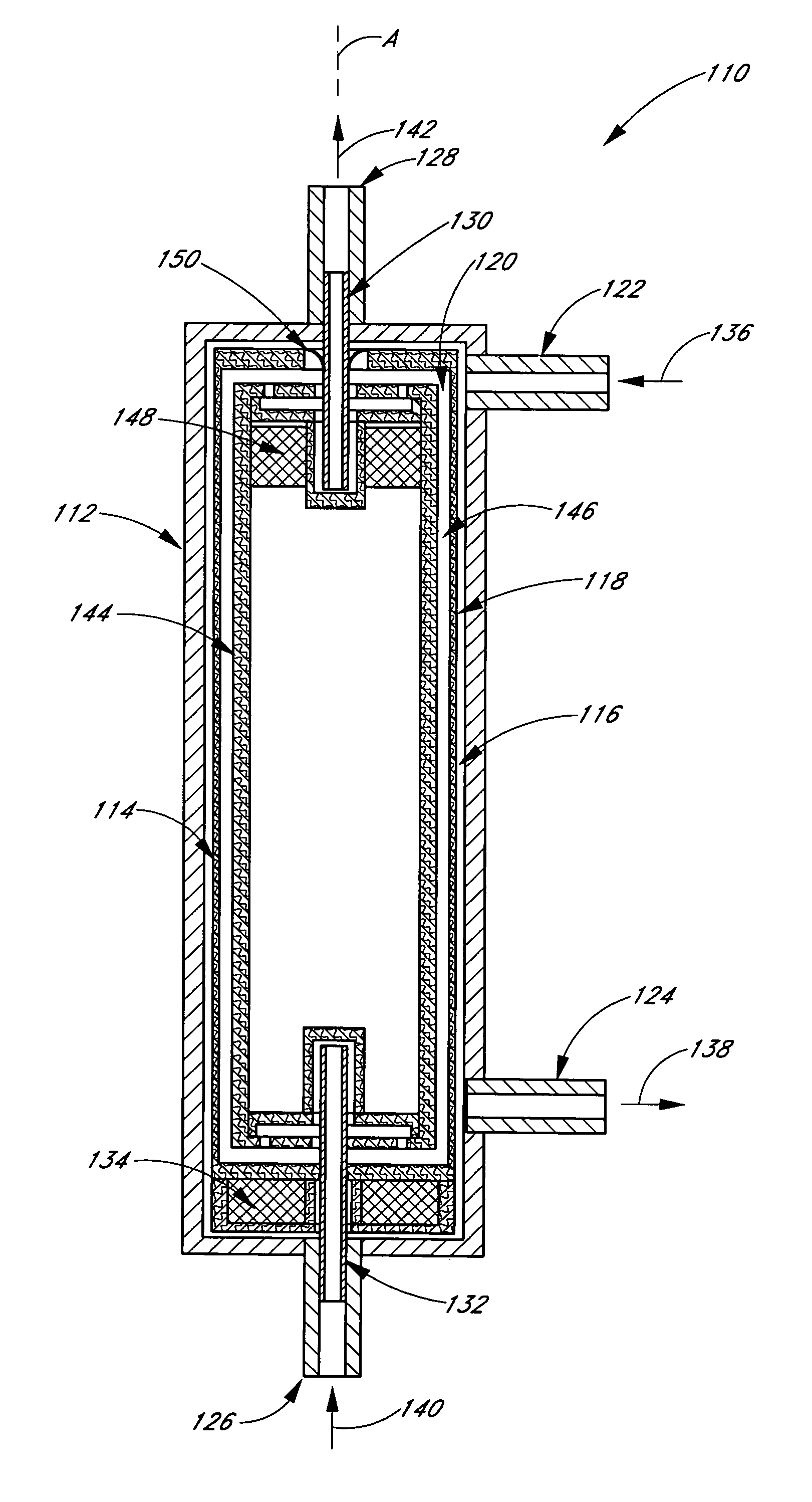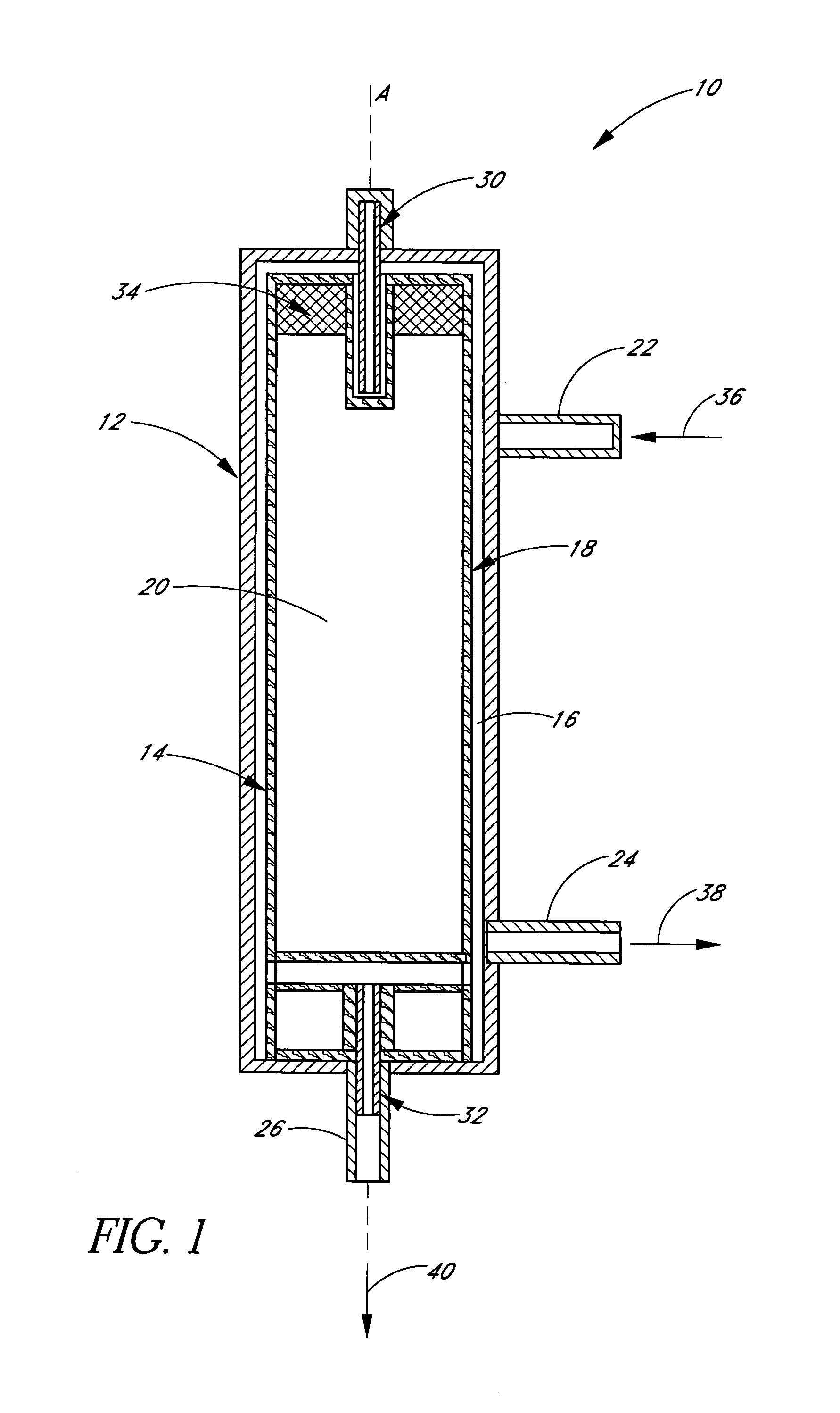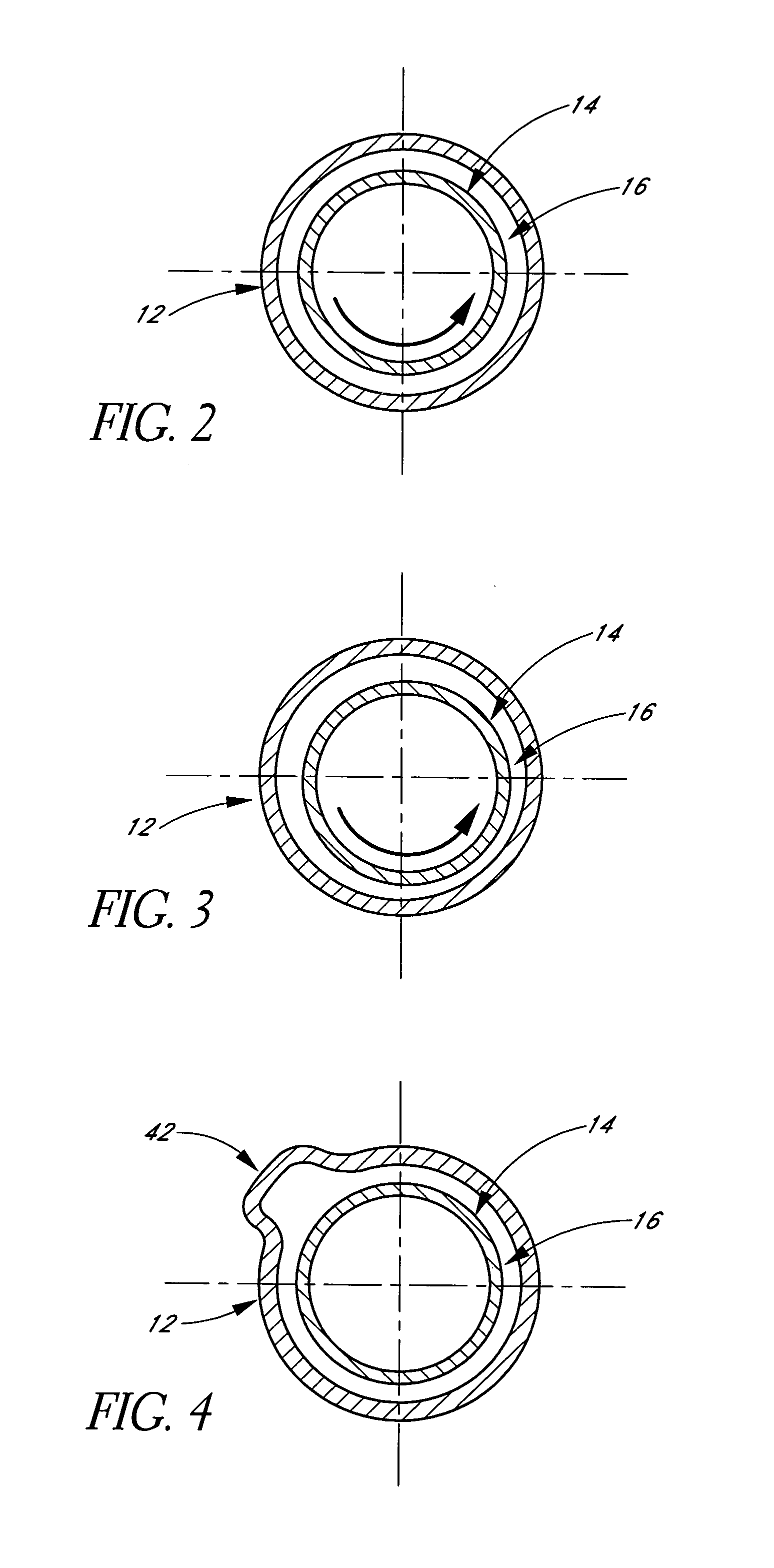Vortex-enhanced filtration devices
a technology of filtration device and filtration membrane, which is applied in the direction of filtration separation, membrane, separation process, etc., can solve the problems of difficult manufacturing of hollow fiber cartridges, toxic to patients, and many of the chemicals needed in manufacture, so as to prevent concentration polarization and enhance mass transfer across the dialysis membrane
- Summary
- Abstract
- Description
- Claims
- Application Information
AI Technical Summary
Benefits of technology
Problems solved by technology
Method used
Image
Examples
Embodiment Construction
[0031]It is well known that Taylor vortices, otherwise referred to herein as Taylor vorticity, can increase the mass transfer through a filter by one or two orders of magnitude. This is useful where it is desirable to remove a component of a fluid by size separation from a feed fluid. For example, Taylor vorticity is useful in removing plasma from blood. Here the separation mechanism is accomplished by the pore size of the filter.
[0032]In other separation processes the components of the feed fluid are removed by following a concentration gradient. An example of this is in dialysis and, in particular, blood dialysis. Here, urea and other low molecular weight waste by-products are removed from blood by placing blood on one side of a membrane and a fluid with low concentrations of urea and other waste by-products on the other side of the membrane. The urea and other waste by-products follow the concentration gradient and move through the membrane from the blood to the dialysis fluid. A...
PUM
| Property | Measurement | Unit |
|---|---|---|
| mass | aaaaa | aaaaa |
| diameter | aaaaa | aaaaa |
| diameter | aaaaa | aaaaa |
Abstract
Description
Claims
Application Information
 Login to View More
Login to View More - R&D
- Intellectual Property
- Life Sciences
- Materials
- Tech Scout
- Unparalleled Data Quality
- Higher Quality Content
- 60% Fewer Hallucinations
Browse by: Latest US Patents, China's latest patents, Technical Efficacy Thesaurus, Application Domain, Technology Topic, Popular Technical Reports.
© 2025 PatSnap. All rights reserved.Legal|Privacy policy|Modern Slavery Act Transparency Statement|Sitemap|About US| Contact US: help@patsnap.com



